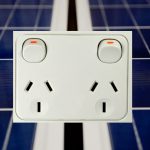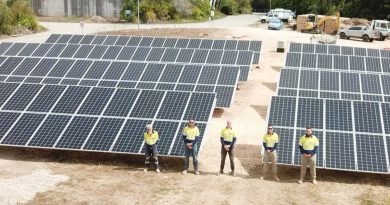Solar Owners: Shop Around For The Best Electricity Plan

Here’s an example of what can happen if owners of solar power systems don’t find the best electricity plan for their situation.
I was reading an article elsewhere yesterday on renewable energy in South Australia and in the comments below was a fellow unhappy with solar feed-in tariffs, which aren’t as generous as they used to be. He mentioned in the last quarter he exported 2,900 kilowatt-hours to the grid, consumed 350 kilowatt-hours of mains grid electricity and still got a bill (how much wasn’t mentioned).
Perhaps he hasn’t compared electricity retailer plans for solar owners. Assuming he lives in Adelaide, I took a look at a plan from major retailer servicing Adelaide that offers a comparatively high feed-in tariff, but not the lowest consumption and daily charge rates:
- Consumption tariff (flat rate): 38.27¢/kWh
- Feed-in tariff: 10¢/kWh
- Daily charge: 94.82c a day
Based on that:
- Exports: 2,900 kWh x 10c = $290 credit
- Consumption: 350 kWh x 38.27c = $133.95 debit
- Daily charge: 92 x 94.82c = $87.24 debit
So, $290 – $133.95 – $87.24 = $68.81 credit. While that isn’t exactly a fistful of cash, it’s certainly better than a bill. And if this solar owner isn’t on the best plan for his circumstances, it could translate to a significant chunk of change over an extended period.
But what if this person isn’t in Adelaide, or even in South Australia? For example, if he’s in Perth, he likely would have wound up with a small bill given the stingy feed-in tariff and lack of retailer choice over there. However, the bill he received was for the last quarter – likely covering the worst time of year for solar energy production. And what we don’t know is how much money this system owner saved through self-consumption.
Comparing Electricity Plans Made Simple
The above exercise from go to whoa took just a few minutes thanks largely to the recently revamped SolarQuotes electricity plan comparison tool, which is geared towards owners of solar power systems. You simply enter your postcode, hit the button and a list of plan summaries will be generated you can then sort and filter.
When using the tool, bear in mind the highest feed-in tariff won’t always result in the lowest overall electricity bill as differences between consumption and daily charges need to be considered. There can also be gotchas in retailer plans to be wary of or conditions that will exclude participation. For example, there is a retailer offering a higher feed-in tariff in Adelaide, but clicking through to the plan detail page revealed you also needed a solar battery to participate – it was a Virtual Power Plant (VPP) offer.
Once a better plan has been identified, it shouldn’t be hard to switch retailers if required assuming you’re not currently locked into a term contract. Check out this guide to switching electricity plans to help ensure you have your ducks lined up.
Better Feed-In Tariffs On The Horizon
As mentioned, solar feed-in tariffs aren’t as generous as they once were. The high rates of old were to encourage uptake of solar panels – and that certainly worked. But current rates could get better for a bit in some states as the cost of electricity increases.
But regardless of which way feed-in tariffs go, the real value in having solar panels will remain in maximising solar energy self-consumption.
Original Source: https://www.solarquotes.com.au/blog/solar-compare-electricity-mb2700/


















